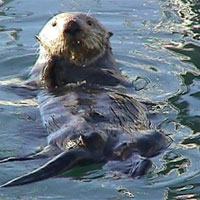| ||
| ||
|
The good news: The peregrine falcon and the sea otter no longer face extinction.
The not-so-good news: COSEWIC proposes adding another 36 species to Canada’s official List of Wildlife Species at Risk. Species from all regions of the country, on the land and in the sea, are at risk of extinction.
“Our job is to assess species based on the best available scientific, community and aboriginal traditional knowledge available,” says Jeffrey Hutchings. The Dalhousie biology professor has served as the chair of the committee for more than a year. “What we don’t take into account are the political or socio-economic consequences of our assessments.”
COSEWIC is a national scientific advisory body that assesses the status of wild species, subspecies, varieties, or other important units of biological diversity, that are considered to be at risk in Canada. As an arm’s length body, COSEWIC reports annually to the Minister of the Environment, who can accept the body’s recommendations, reject them or send species back to COSEWIC for further evaluation.
The peregrine falcon was almost wiped out in the 1950s and ‘60s because of pesticide contamination that thinned their eggshells. But since the 1970s, particularly after DDT was banned in Canada, this impressive bird of prey has made a strong recovery.
The resurgence of the sea otter — its rich brown pelt was once prized the world over — is even more dramatic. Extirpated on Canada’s west coast because of the fur trade more than a century ago, sea otters from California were reintroduced to British Columbia in the early 1970s. They’ve since repopulated a third of their historic range along the province’s coastline, and although numbers are still small, the population is healthy and expanding.
"It’s very satisfying to witness the successful recovery of species that were on the edge of extinction. It highlights the importance of endangered species legislation and associated recovery programs in protecting and recovering Canada’s wildlife," says Dr. Hutchings.
If only that legislation could help species like the basking shark, a plankton-feeding fish that grows to the size of a bus; the Eastern pond mussel, decimated by the introduction of the zebra mussel into the Great Lakes; and the Eastern flowering dogwood, one of Canada’s showiest trees which is being destroyed by an invasive species of fungus.
“Habitat loss and disturbance are the biggest threats facing species. This could be the result of factors as diverse as forestry, housing development, or changes to the natural flow of rivers,” says Dr. Hutchings. “Another major threat is the invasion of exotics that can have devastating effects on Canada’s native species.”
The legal list has expanded to include 389 species, which are categorized as extirpated, endangered, threatened or special concern.



